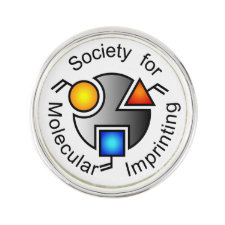
Authors: Li JP, Ma XH, Li MX, Zhang Y
Article Title: Does polysaccharide is an idea template selection for glycosyl imprinting?
Publication date: 2018
Journal: Biosensors and Bioelectronics
Volume: 99
Page numbers: 438-442.
DOI: 10.1016/j.bios.2017.08.004
Alternative URL: https://www.researchgate.net/publication/318892449_Does_polysaccharide_is_an_idea_template_selection_for_glycosyl_imprinting
Abstract: A novel glycoprotein imprinting strategy was proposed and was applied to the detection of the carbohydrate antigen 19-9. The glycosylated complex of glycoprotein was used as template to construct a glycosyl imprinted sensor. The eluted imprinted cavities showed good affinity for template glycosyls and glycoproteins carrying template glycosyl. The effect of template saccharide structure on glycosyl imprinted sensors is further discussed. More complex template structures can lead to better sensor performance including selectivity and sensitivity. As a result, the polysaccharide imprinted sensor showed preeminent linear response to CA19-9 in the range of 0.1-5U/mL, with a detection limit of 0.028U/mL (3δ /K), while the linear of the monosaccharide imprinted sensor was 1-60U/mL and the detection limit was 0.17U/mL. The complex structure on the template surface provides more possibilities for the recognition of the template molecules, consequently, led to the significant anti-interference capability of the polysaccharide imprinted sensor. Furthermore, recoveries ranging from 93.0% to 103.5% were achieved when human serum samples were assayed using the polysaccharide imprinted sensor
Template and target information: polysaccharide, monosaccharide, glycosyl, glycoprotein, protein
Author keywords: macromolecular imprinting, Glycosyl imprinting, CA19-9, polysaccharide, Monosaccharide, Tumor marker



Join the Society for Molecular Imprinting

New items RSS feed
Sign-up for e-mail updates:
Choose between receiving an occasional newsletter or more frequent e-mail alerts.
Click here to go to the sign-up page.
Is your name elemental or peptidic? Enter your name and find out by clicking either of the buttons below!
Other products you may like:
 MIPdatabase
MIPdatabase









